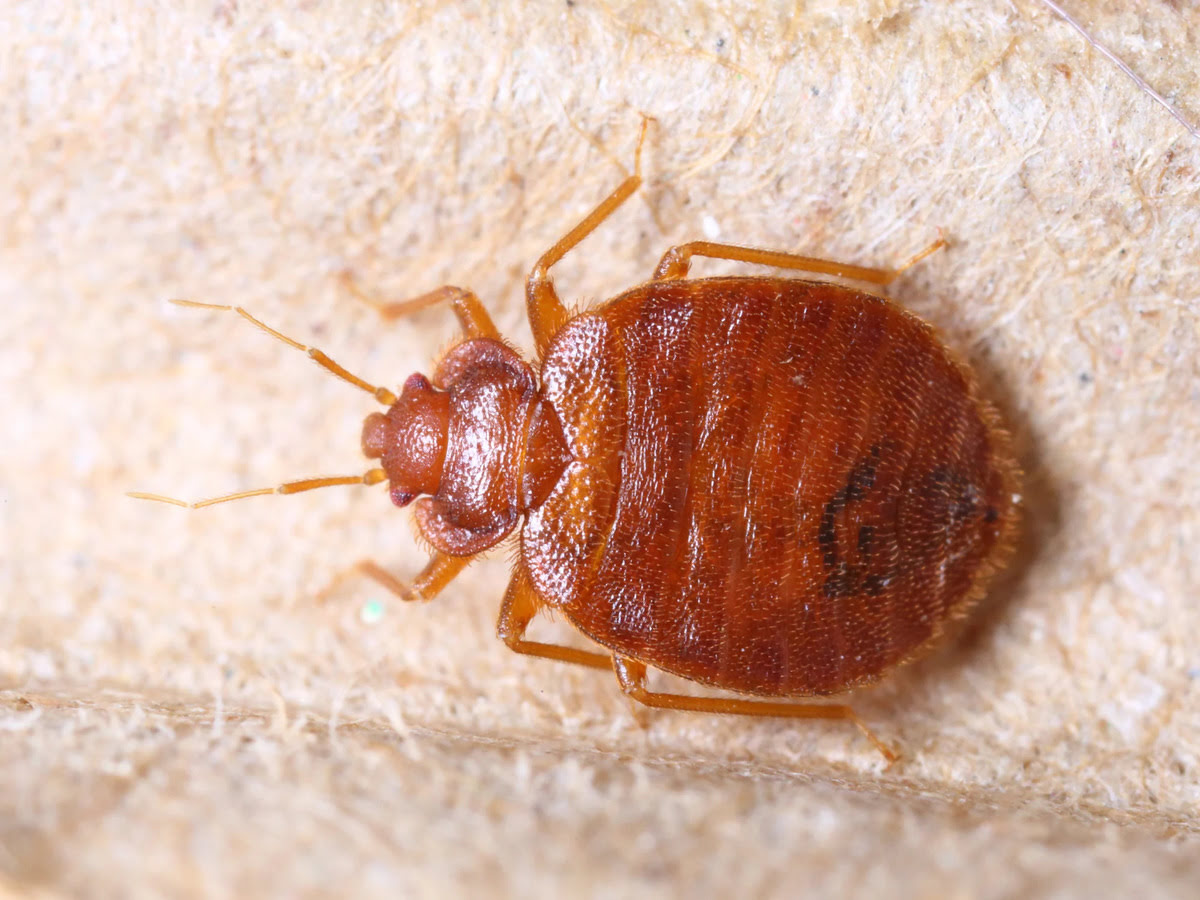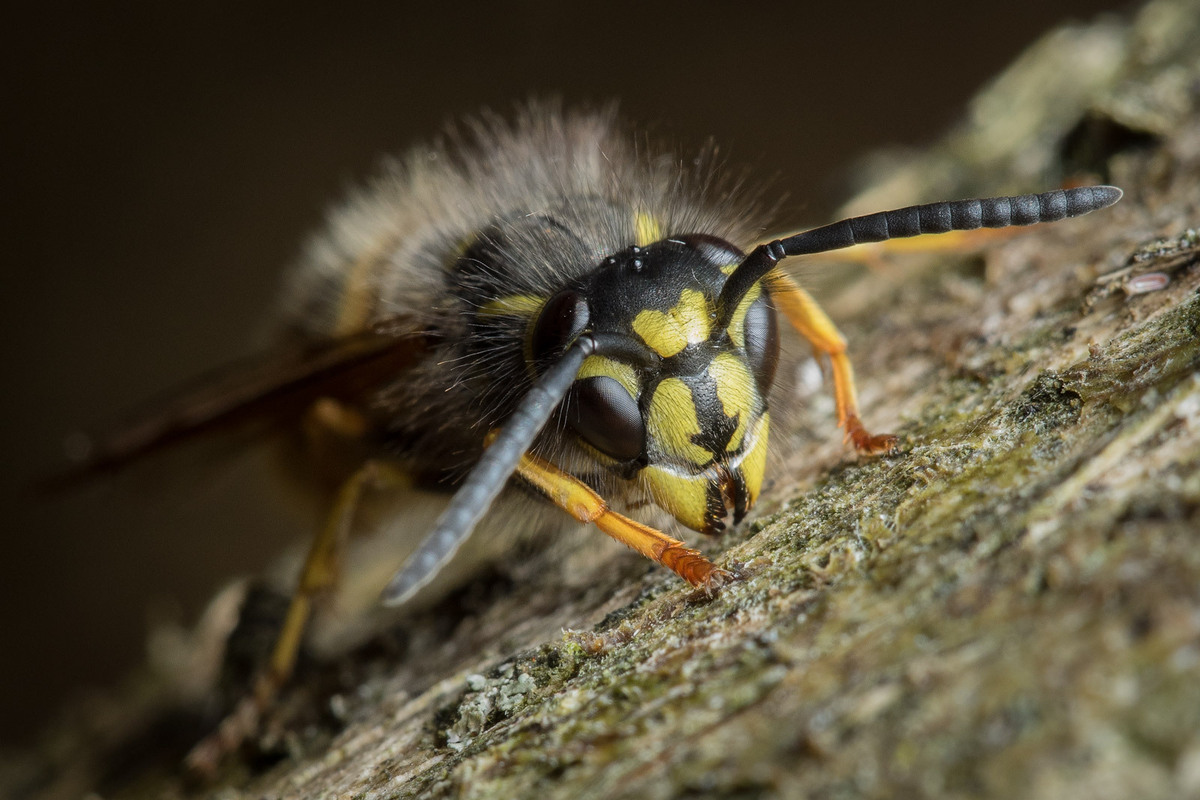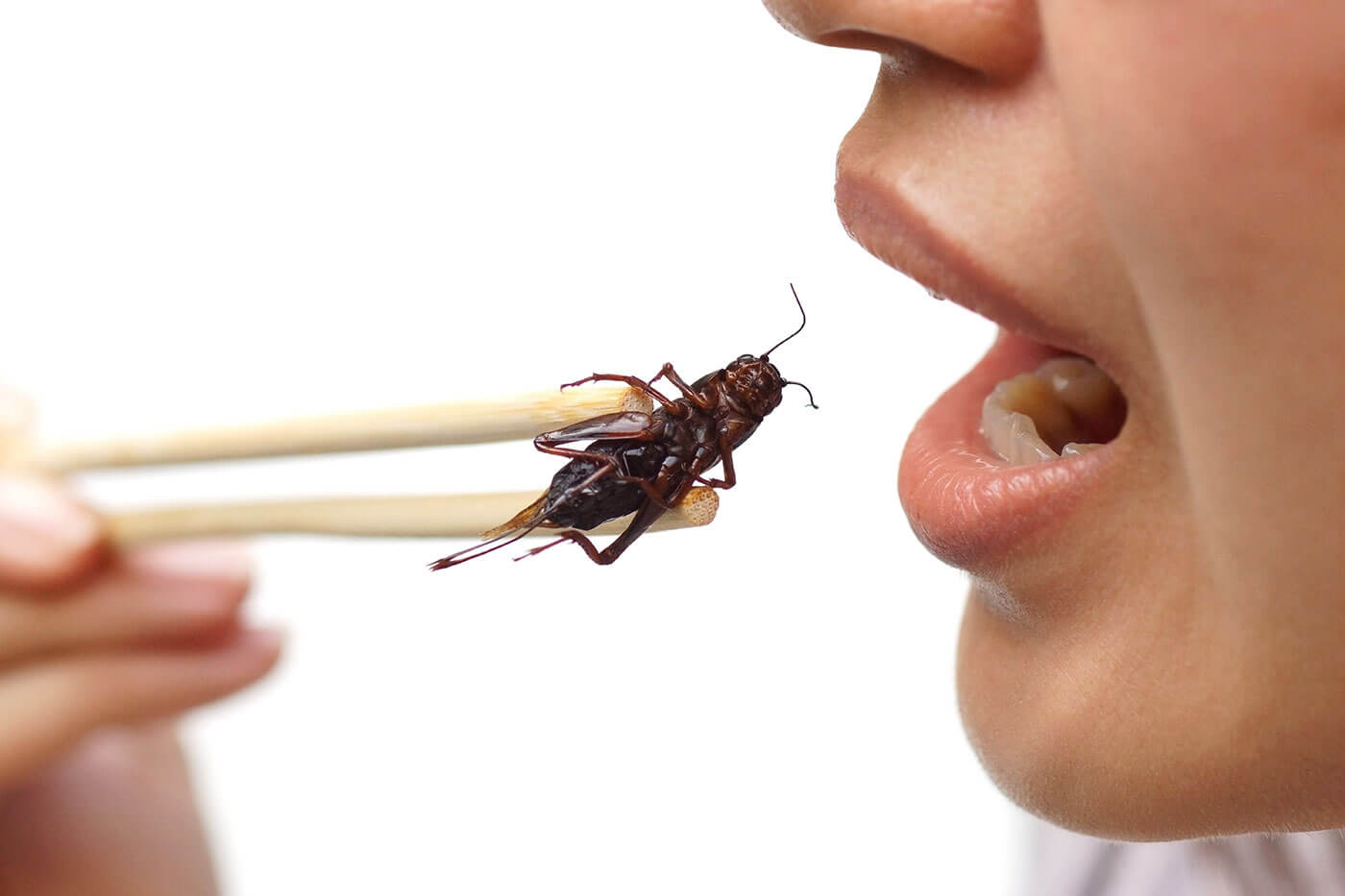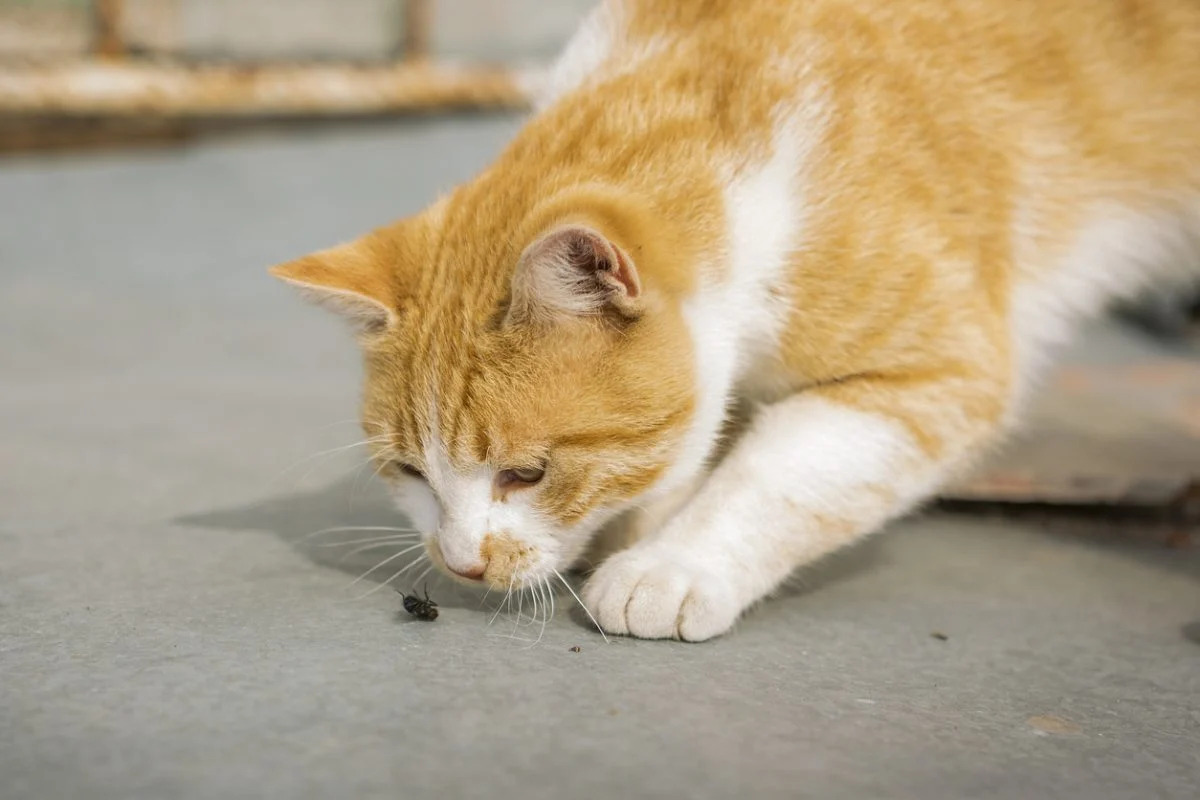Home>Gardening News and Trends>Latest News>Why Are Spiders Not Insects


Latest News
Why Are Spiders Not Insects
Published: December 11, 2023
Discover the latest news on why spiders are not insects. Explore the key differences between these fascinating creatures in this informative article.
(Many of the links in this article redirect to a specific reviewed product. Your purchase of these products through affiliate links helps to generate commission for Chicagolandgardening.com, at no extra cost. Learn more)
Table of Contents
Introduction
Spiders and insects are both fascinating creatures that can be found in various habitats around the world. While they may appear similar at first glance, they actually belong to distinct groups in the animal kingdom. Spiders belong to the arachnid class, which includes creatures such as scorpions, ticks, and mites. On the other hand, insects belong to the insect class, the largest and most diverse group of arthropods.
Despite their differences, spiders and insects are often grouped together due to their shared presence in our surroundings. However, it is important to understand that they have distinct characteristics that set them apart.
In this article, we will explore the key differences between spiders and insects, focusing on their morphology and anatomy, reproduction and development, behavior and feeding habits, ecological roles and adaptations, as well as their evolutionary history and classification.
By delving into these topics, we hope to shed light on why spiders and insects are not the same and gain a deeper appreciation for the unique traits that make each group fascinating in its own way.
Key Differences between Spiders and Insects
While spiders and insects may share certain characteristics, there are several key differences that set them apart. Understanding these distinctions is crucial for accurate classification and a deeper understanding of their biology.
1. Body Structure: One of the most noticeable differences between spiders and insects lies in their body structure. Spiders have two main body parts: the cephalothorax (combined head and thorax) and the abdomen. Insects, on the other hand, have three distinct body segments: the head, thorax, and abdomen.
2. Legs: Spiders have eight legs, while insects generally have six legs. This difference in leg count is a fundamental characteristic that separates the two groups.
3. Wings: Most insects possess wings, which allow them to fly or glide. Spiders, however, lack wings entirely and rely on different mechanisms for locomotion and capturing prey.
4. Antennae: Insects commonly have antennae attached to their heads, which serve sensory functions such as detecting scent trails. Spiders, on the other hand, lack antennae and rely on other sensory organs, such as leg hairs and specialized structures on their bodies, for navigation and detection of prey.
5. Respiration: Spiders breathe through book lungs or tracheae, while insects have a system of tubes called tracheae that allow them to respire. This difference in respiratory organs is another key characteristic that distinguishes the two groups.
6. Mouthparts: Spiders have fangs and venom glands, which they use to immobilize and digest their prey. Insects have different types of mouthparts, including chewing, piercing-sucking, or sponging mouthparts, depending on their feeding habits and adaptations.
7. Reproduction: Spiders reproduce through internal fertilization, where the male transfers sperm to the female. Insects, on the other hand, have a wide range of reproductive strategies, including internal and external fertilization, as well as various forms of courtship behavior.
8. Social Behavior: While some insects, such as ants and bees, exhibit complex social behavior and live in organized colonies, spiders are predominantly solitary creatures and do not display the same level of social structure.
By understanding these key differences, it becomes clear that spiders and insects are distinct groups with their own unique characteristics and adaptations. This knowledge is essential in fields such as taxonomy, ecology, and pest management, where accurate identification and understanding of these organisms is critical.
Morphology and Anatomy
The morphology and anatomy of spiders and insects showcase their distinct adaptations and structures that help them thrive in their respective environments.
Spiders: A spider’s body consists of two main parts: the cephalothorax and the abdomen. The cephalothorax houses the spider’s head, which contains its sensory organs, such as its eight simple eyes, leg hairs, and specialized structures like lyriform organs for detecting vibrations. It also holds the spider’s mouthparts, which include chelicerae and fangs used for capturing and immobilizing prey. Attached to the cephalothorax are the spider’s eight legs, enabling them to walk, climb, and capture prey with great agility. The abdomen contains vital organs such as the silk glands and spinnerets, which produce and release silk for various purposes, including web-building, prey capture, and protection.
Insects: In contrast, insects have a three-part body structure consisting of the head, thorax, and abdomen. The head contains the insect’s sensory organs, including compound eyes, antennae, and mouthparts specialized for different feeding habits. Each segment of the insect’s thorax has a pair of legs, enabling locomotion, and in some cases, pairs of wings used for flight. The wings are often membranous with intricate venation patterns. The abdomen houses vital organs such as the digestive system, reproductive organs, and respiratory structures like spiracles and tracheae, which facilitate gas exchange.
Both spiders and insects have an exoskeleton made of chitin, a tough and flexible material that provides support and protection. This external skeleton acts as a barrier against physical threats and helps prevent desiccation.
It’s important to note that while there are general similarities in the body plan, there is a remarkable diversity in the size, shape, coloration, and specialized structures within each group. These adaptations allow spiders and insects to thrive in a wide range of ecological niches and exhibit a remarkable variety of behaviors and lifestyles.
Reproduction and Development
The reproduction and development processes of spiders and insects showcase diverse strategies that have evolved to ensure the survival and continuation of their respective species.
Spiders: Most spiders have separate sexes, with male and female individuals. The mating process in spiders is often complex and involves courtship behavior. Male spiders use a variety of displays and movements to attract females, while females assess potential mates based on various factors. Once a male and female pair up, the male transfers sperm to the female using specialized structures called pedipalps. Females then store the sperm in specialized organs called spermathecae until they are ready to fertilize their eggs. Spiders exhibit a wide range of reproduction strategies, including sexual cannibalism, where the female may consume the male after mating. After fertilization, female spiders produce an egg sac containing several eggs, which they protect until it hatches. Spiderlings (baby spiders) undergo a series of molts as they grow and develop into adults.
Insects: Insects have diverse reproductive strategies. Some species exhibit sexual reproduction, similar to spiders, with males transferring sperm to females through specialized organs. Others, such as aphids, can reproduce asexually through a process called parthenogenesis, where females produce genetically identical offspring without mating. Insect development often involves metamorphosis, which can be complete or incomplete. In complete metamorphosis, insects go through four distinct stages: egg, larva, pupa, and adult. Examples of insects that undergo complete metamorphosis include butterflies, beetles, and flies. In incomplete metamorphosis, the insect’s appearance changes gradually as it molts and grows, but there is no distinct pupal stage. Nymphs, which resemble miniature versions of the adult, hatch from eggs and undergo several molts before reaching adulthood. Examples of insects that undergo incomplete metamorphosis include grasshoppers, cockroaches, and true bugs.
By understanding the diverse reproductive strategies and developmental processes of spiders and insects, we gain insight into the intricate mechanisms that have evolved to ensure the survival and success of these fascinating creatures.
Behavior and Feeding
The behavior and feeding habits of spiders and insects demonstrate their unique adaptations and strategies for acquiring food and surviving in their environments.
Spiders: Spiders are primarily carnivorous and feed on a variety of prey, including insects, other arachnids, and even small vertebrates. They are skilled hunters and use diverse methods to capture their prey. Some spiders build intricate webs made of silk, which they use to trap flying insects. Other spiders are active hunters, relying on keen eyesight and agility to pursue and ambush their prey. Once caught, spiders inject venom into their prey using their fangs, which immobilizes and paralyzes their victims. They then use specialized mouthparts to consume the prey by liquefying and sucking out its bodily fluids. Spiders also exhibit a wide range of behaviors such as mating rituals, territorial defenses, and strategies for avoiding predators.
Insects: Insects exhibit a remarkable diversity of feeding habits. While some insects are herbivores, feeding on plant material such as leaves or nectar, others are predators that feed on smaller insects or other arthropods. Some insects are scavengers, feeding on decaying organic matter, while others are parasitic, living off the blood or tissues of other animals. Insects have evolved various adaptations for feeding, including specialized mouthparts. For example, butterflies and moths have a long, coiled proboscis for sipping nectar, while beetles have strong mandibles for chewing through plant matter or capturing prey. Insects also exhibit a wide range of behaviors, including complex social interactions in colonies, such as the division of labor and communication through chemical signals.
It is remarkable to observe the intricate behaviors and feeding strategies employed by spiders and insects, as they highlight the adaptability and survival instincts of these remarkable creatures.
Ecological Roles and Adaptations
Spiders and insects play crucial roles in various ecosystems and have developed unique adaptations that enable them to thrive in their specific environments.
Spiders: Spiders play a vital ecological role as predators that help regulate populations of other invertebrates, including insects. They contribute to the balance of ecosystems by controlling pest populations and preventing outbreaks of certain species. Additionally, spiders are important in nutrient cycling as they consume and decompose organic matter through their feeding habits. Their silk production also has ecological significance, as it contributes to the construction of intricate webs that serve as homes, traps, and platforms for capturing prey. Some spider species have developed camouflage mechanisms or specialized hunting behaviors, enhancing their chances of capturing prey effectively. Others have evolved venomous bites capable of immobilizing or incapacitating larger prey. These adaptations allow spiders to exploit various niches and thrive in diverse habitats, from forests to deserts.
Insects: Insects have a widespread presence and occupy diverse ecological niches. They serve as pollinators, facilitating the reproduction of flowering plants by transferring pollen from one flower to another. Bees, butterflies, and beetles are important pollinators that contribute to the production of fruits and seeds. Insects also act as decomposers, breaking down plant and animal remains and returning nutrients to the soil. Many insects are essential in food webs, serving as a crucial food source for other organisms. Additionally, insects provide valuable ecosystem services such as waste disposal, water filtration, and biological control of pests. Their adaptations range from wings and specialized mouthparts for feeding on specific plants to chemical defenses and mimicry to deter predators.
The ecological roles and adaptations of both spiders and insects underscore their importance in maintaining the balance and functioning of ecosystems. Their diverse characteristics and behaviors contribute to the overall biodiversity and sustainability of the natural world.
Evolutionary History and Classification
The evolutionary history and classification of spiders and insects provide insights into their ancestry and relationships within the animal kingdom.
Spiders: Spiders belong to the class Arachnida, a group that also includes scorpions, ticks, and mites. Arachnids are ancient creatures that have been present on Earth for millions of years. Fossil evidence suggests that primitive spiders existed as far back as the Silurian period, around 420 million years ago. Over time, spiders have evolved various adaptations that have allowed them to diversify and occupy numerous ecological niches. Currently, there are over 48,000 known species of spiders, classified into about 120 families. Spider taxonomy is based on morphological characteristics, such as the arrangement of eyes, leg structure, and spinneret morphology.
Insects: Insects, belonging to the class Insecta, represent the most diverse and abundant group of animals on Earth. They have a long evolutionary history, with fossil evidence indicating their existence over 400 million years ago. Insects have undergone significant adaptive radiations, leading to their vast diversity in terms of form, behavior, and habitat preferences. They are classified into numerous orders, with some of the largest orders including beetles (Coleoptera), butterflies and moths (Lepidoptera), ants, bees, and wasps (Hymenoptera), and flies (Diptera). Insect classification considers various characteristics, including wing structure, mouthpart type, metamorphosis type, and other anatomical features.
Both spiders and insects have undergone extensive diversification and evolution over millions of years, adapting to various ecological niches and developing distinct characteristics. Understanding their evolutionary history and classification aids in our comprehension of their relationships and their place in the vast web of life.
Conclusion
Spiders and insects, two distinct groups of creatures in the animal kingdom, showcase a wide array of fascinating characteristics, adaptations, and ecological roles. While they may share some similarities, such as their presence in various habitats and their small size, they possess significant differences that set them apart.
From a morphological and anatomical perspective, spiders are characterized by their two-part body structure and eight legs, while insects have a three-part body structure and usually six legs. In terms of reproductive strategies, spiders typically engage in complex courtship rituals and undergo internal fertilization, while insects exhibit diverse reproductive techniques, including parthenogenesis and various forms of fertilization.
<7p>Behavior and feeding habits also differ greatly between spiders and insects. Spiders employ various methods, such as web-building and active hunting, to capture their prey, often injecting venom to immobilize them. Insects, on the other hand, exhibit a remarkable diversity of feeding habits, ranging from herbivory to predation, and contribute to ecosystems as pollinators, decomposers, and sources of food for other organisms.
Both spiders and insects have unique adaptations that have allowed them to thrive in their respective environments. Spiders have evolved intricate silk-producing abilities, venomous bites, and specialized sensory organs, while insects have developed diverse mouthparts for specific feeding habits, wings for flight, and various chemical defenses.
Understanding the evolutionary history and classification of spiders and insects provides insights into their origins and relationships within the animal kingdom. Spiders belong to the class Arachnida, while insects belong to the class Insecta, and both groups have undergone extensive diversification over millions of years.
In conclusion, while spiders and insects may share some superficial similarities, they are distinct groups with unique characteristics, adaptations, and ecological roles. Exploring these differences not only enhances our understanding of these fascinating creatures but also sheds light on the remarkable diversity and complexity of life on Earth.







